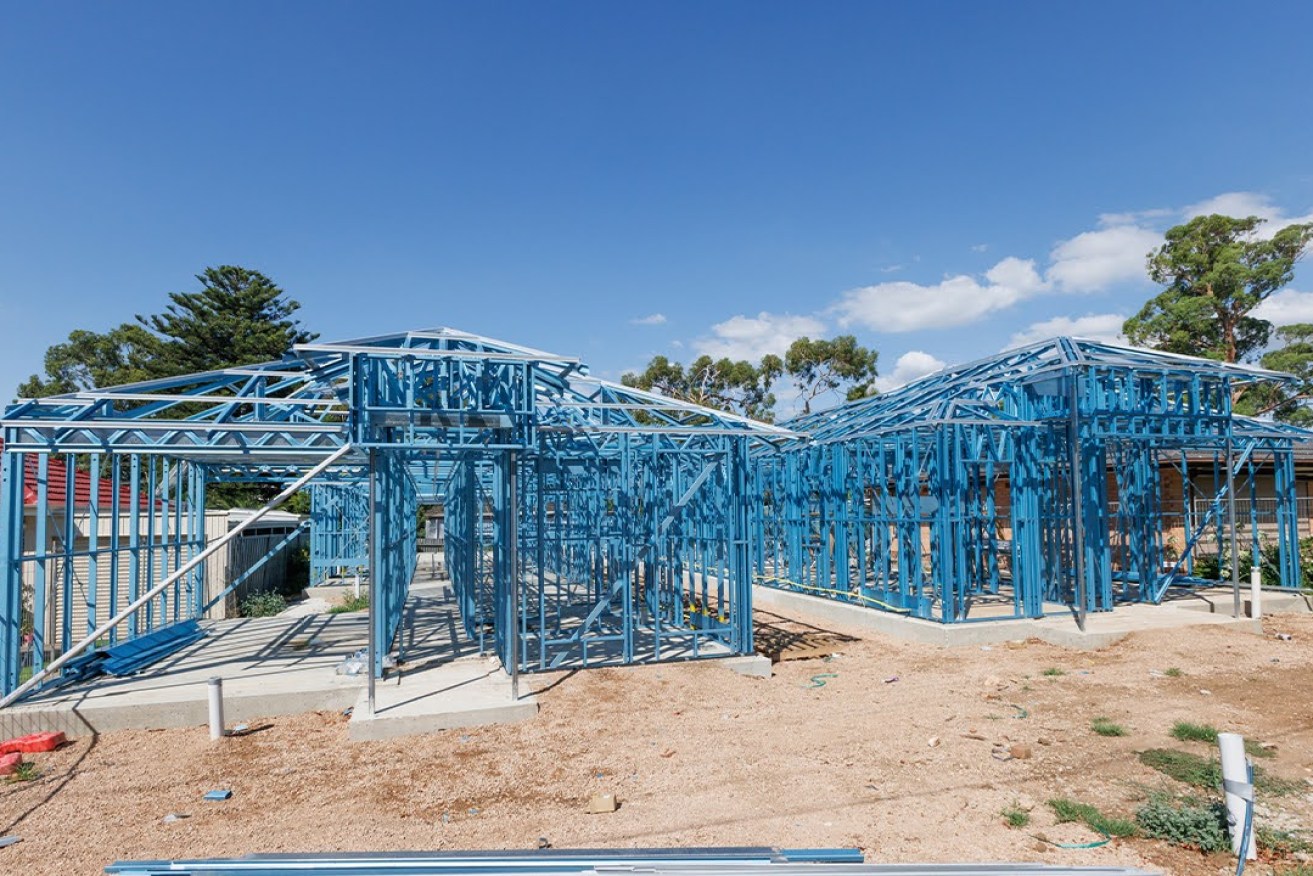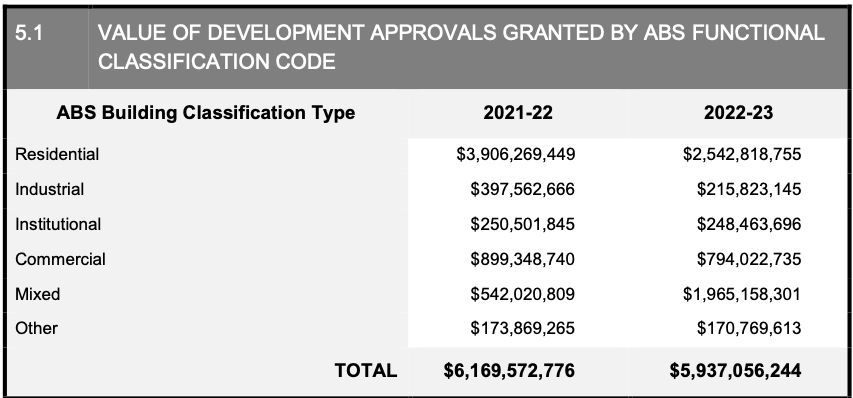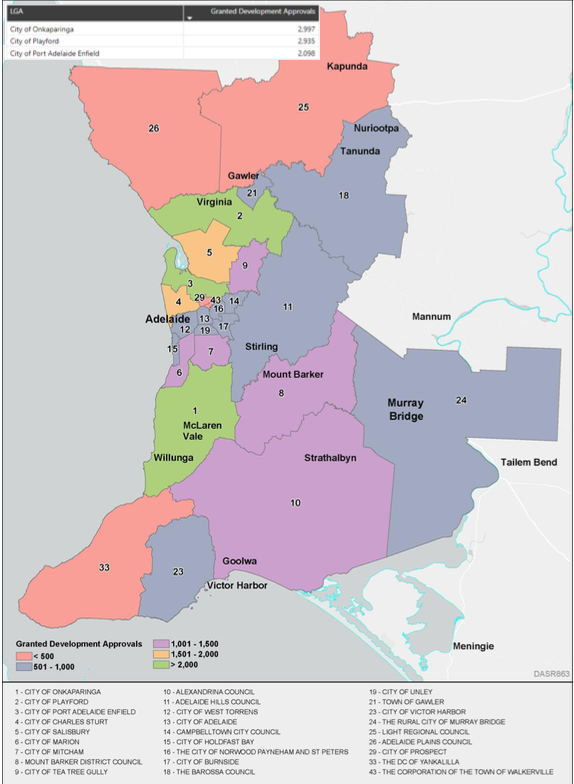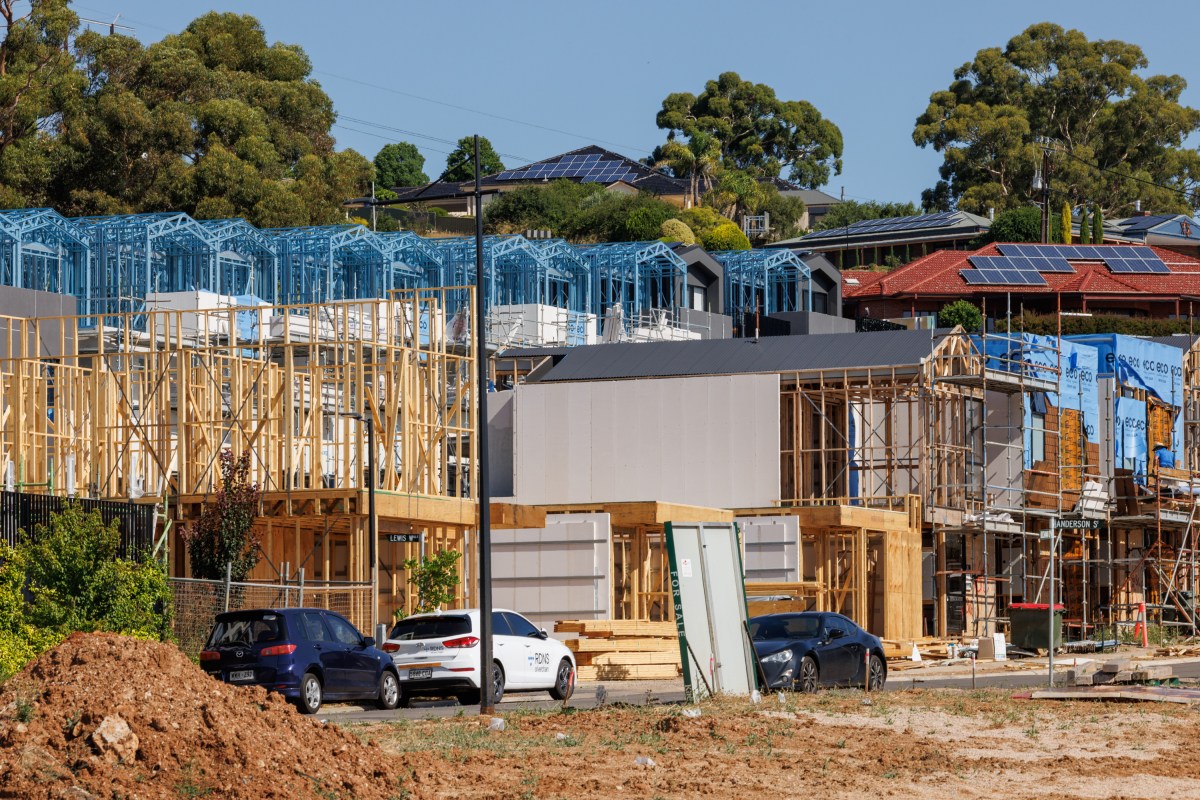SA development activity slows amid housing crisis
The number of development applications lodged in South Australia declined nearly 10 per cent last financial year, with cost of living pressures, rising building costs and the end of the HomeBuilder grant scheme blamed for a drop in housing investment.


Photo: Tony Lewis/InDaily
The State Planning Commission’s Performance System Indicators annual report published on Thursday shows the number of development applications lodged in South Australia declined from 40,164 in 2021-22 to 36,251 in 2022-23.
The number of planning approvals granted for residential buildings also declined from 25,475 to 24,015. The Australian Bureau of Statistics (ABS) classes residential buildings as detached houses, townhouses and apartments intended for long-term accommodation.
However, the number of approvals for mixed-use developments – which combine multiple land uses, such as apartments and commercial space – increased from 247 to 296. This development category also recorded a $1.4 billion increase in approvals value last financial year.
The report said there were a number of factors likely behind the fall in residential development applications.
“This decrease is likely to coincide with the ending of the federal government’s HomeBuilder stimulus package, numerous interest rate rises, cost of living pressures and increased building costs,” the report states.
The 9.7 per cent drop in development applications coincides with a significant decline in the value of residential buildings approved in South Australia last financial year.
The report shows the value of residential development approvals declined from $3.9 billion in 2021-22 to $2.5 billion in 2022-23.
The 34.9 per cent drop equates to a $1,363,450,694 monetary decline in strictly residential buildings approved last year.

Monetary values of different building category approvals in 2021-22 compared to 2022-23. All classes except mixed-use development declined last financial year. Table: PlanSA
But that was partially offset by the rise in approvals for mixed-use developments.
The value of mixed-use development approvals rose from $542 million to more than $1.9 billion in 2022-23 – a year-on-year increase of more than $1.4 billion, or 262 per cent.
Every other building classification category – residential, commercial, institutional, industrial and “other” – recorded declining approval values in 2022-23.
The total value of development approved in South Australia declined from around $6.1 billion to $5.9 billion.

The top metropolitan LGAs for housing development approvals. The City of Onkaparinga, City of Playford and City of Port Adelaide Enfield led the way in 2022-23. Image: PlanSA
The decline in South Australian development activity comes as governments across the country grapple with a housing crisis that has priced many young Australians out of home ownership and plunged rental vacancy rates to record-low levels.
The South Australian government is waiving stamp duty for first home-owners buying newly constructed homes valued up to $650,000 – or purchasing vacant land worth up to $400,000 – in a bid to make home ownership more achievable.
It has also announced land rezonings in Adelaide’s northern and southern suburbs to allow space for more than 25,000 new homes.
However, the first of these homes are not expected to begin construction until 2024. Other rezoning sites, like Dry Creek, have development timeframes that could span 20 years.
Housing Industry Association South Australia executive director Stephen Knight said the slowdown in development activity could be traced back to the end of the HomeBuilder Grant scheme in 2021.
The Homebuilder Grant was a federal government scheme introduced at the height of the COVID-19 pandemic, offering $25,000 grants for building a home between June 4 and December 31, 2020.
The scheme was pared back in 2021 to a $15,000 grant for new home contracts signed between January 1 and March 31.
“The HomeBuilder grant was far more successful than was first envisaged and led to a massive increase in demand for new residential builds,” Knight said.

Photo: Tony Lewis/InDaily
“This was reflected in the leap in value of residential construction during that time.
“Also, the increased demand drove up the cost of new homes and additions to existing homes.
“There was a rapid decline in sales after that period as a result of Reserve Bank intervention with rapid interest rate rises impacting on people’s ability to afford to sign up for new homes.”
Knight also said cost of living pressures have had an impact, with the outlook looking bleak into next year.
“The pull-forward effect of the HomeBuilder grant contributed to the slowdown and it is anticipated that the significant fall in new home sales will continue until there is some winding back of interest rates,” he said.
“This is alarming given the housing crisis that SA is facing.
“Despite the massive need for more homes, the sad fact is that in 2024 we will start the lowest number of new homes for a decade.”
Planning Minister Nick Champion, speaking about the Planning Commission’s report in parliament on Thursday, highlighted the increase in mixed-use development approvals.
“That is the sort of development that this government wants to see more of,” he said.
“Mixed-use development creates great economic, social and environmental benefits to communities, and many of the new mixed-use developments were enabled through the statewide code amendment process.”
There were 106 planning code amendments initiated last financial year, according to the report. Code amendments are a process through which landowners and councils propose land for rezoning, with approval ultimately granted by the Planning Minister.
Code amendments have been initiated for 1690 hectares of land so far in 2023, Champion said.
“On top of those initiations, code amendments on more than 275 hectares of land have been adopted,” he said.
“This is land that has been rezoned to support residential and mixed-use development, land that can now be subdivided and developed.
“We are doing all we can to fast-track development. We are doing all we can to alleviate the pressures on housing availability and housing affordability.”
Champion’s office also highlighted that the value of Crown development – state government projects or government-sponsored infrastructure development – increased from $1.4 billion to $2.2 billion.
Urban Development Institute Australia SA division chief executive Liam Golding said the increase in mixed-use development approvals was “positive news for the state and shows the development industry delivering much needed supply in this sector of the market”.
“However, overall we know we need to continue to trend upwards on indicators like this,” he said.
“During the current Housing Affordability Crisis the ease in value of Residential development approvals granted is cause for considerable concern and needs careful, deeper analysis.
“The industry knows there is significant demand for residential development at present so working through constraints to development to ensure development applications can be approved must be a focus for the Government.”




